Cairngorms Adventure Part 3: Atmosphere
A winter hike from Loch Etchachan to Loch Morlich via Bynack More
March 2024:
A few things delayed the completion of this Cairngorms trilogy, but hopefully, the finale is worth the wait: wind tendrils whip mythical Loch Avon, rime ice prickles the Barns of Bynack, and lenticular clouds rise in attack formation over Bynack More.
If you missed Part 1, ‘Winter Skills’ and Part 2, ‘Cryosphere’ follow these links to read about my trip so far.
Part 2 left me camping beside frozen Loch Etchachan at 3,000 feet, admiring a wintery sunset. I’d never camped in sub-zero conditions before, so was anxious about the night ahead, but I had the security of a minus 22oC-rated bag to sleep in on loan from a friend. I’d successfully pitched my tent in the snow and found running water for dinner.
As the night unfolded, the wind increased (50 mph was forecast), and snow buffeted my tent until it was partly buried in a drift. My efforts to bat it off from the inside proved futile. Spindrift snuck under the fly sheet, coating the inner mesh before dripping onto the sleeping bag, gradually soaking into the down, making the feathers claggy and cold. In an attempt to divert the water, I draped a spare groundsheet over the bag, only to worsen the situation as condensation accumulated between the layers. I lay awake, questioning whether my previously reliable Vango F10 tent was up to the conditions as ice crystals fluttered around my head, having drifted through a previously undiscovered tear in the mesh. By this stage, I had pulled on every layer of clothing I had with me except for my waterproofs.
Unable to sleep, I attempted to read The Luminaries on my Kindle but struggled to make the mental leap from my present situation to a small New Zealand town in the grip of a gold rush.
Moving would have been foolish, so I had no option but to stick it out and eventually managed to get a couple of hours of sleep. At around 7 am, a diffuse light filtered into my damp tent, and I emerged, cold and stiff but otherwise unharmed, into a whiteout of windswept snow.
My first job was to find water for breakfast, so I attempted to retrace my steps from the previous evening to locate the stream emanating from the Loch. But all reference points had vanished except for a rough approximation of the Loch’s shore: a smudge of grey under white. After a few minutes of tracing this indistinct boundary and taking care not to stray onto the ice, I saw a man in the distance crouched in front of a tent. I hesitated, then called ‘hello’ so as not to startle him. I cautiously approached, but the shape morphed into a large boulder. An apparition. I felt like I was stumbling through an icy graveyard dotted with giant tombstones. On impulse, I glanced back to my tent for reassurance, but it had been enveloped in the cloud. Nan Shepherd also wrote about the illusions cast by light in these mountains:
‘Nothing is so ghostly as mist over snow… Such illusions, depending on how the eye is placed and used, drive home the truth that our habitual vision of things is not necessarily right: it is only one of an infinite number, and to glimpse an unfamiliar one, even for a moment, unmakes us, but steadies us again.’
I am all for being ‘unmade’ by the landscape, thinning the membrane between imagination and reality. Rediscovering the soul of the world.
I pushed on, stumbling around the edge of the Loch, until I found a darker patch of snow that I guessed was where the stream lay hidden. Taking care not to collapse the snow tunnel and get a boot full of freezing water, I excavated with my ice axe until I found the living stream.
After breakfast, I unburied my tent and hacked through the frozen snow with my ice axe to remove the pegs. With the wind still howling, I left three pegs in the ground while I removed the poles — a hard-won camping lesson. Finally, at around 9 am, I was ready to fade into the landscape.
The short drop down to Loch Avon took me over an hour. I inched my way across a nearly invisible boulder-strewn mountain, avoiding a semi-frozen tarn and steep cliffs apparent from the map. I was glad of the crampons and ice-axe that I had learnt how to use earlier that week on my winter skills course. I zigzagged down the steepest section, taking care not to cause an avalanche.
Finally, around mid-morning, I dropped below the cloud to behold the head of Loch Avon (Loch A’an). The word, Celtic for ‘river’, conjures up images of Avalon and swords stuck in stones in my mind — which would be fitting given the rugged scenery — but according to some sources, it means ‘Water of the Very Bright One’ named after Athfhinn, the wife of Fionn, a Celtic warrior who supposedly drowned while trying to cross the River Avon. Whatever the etymology, the scene ahead would have made a fitting backdrop to any fantasy epic: a cold, silver sword thrust deep into the heart of the Cairngorms.
As I followed a rocky path along the left side of the Loch, the wind worried the water, forming long black tentacles that raced across the surface, suddenly turning this way and that as if possessed by a malevolent mind. It was mesmerising to watch, and I half-expected a Kraken to explode from under the surface and lash itself against the snow-clad shore.
In the absence of the animate, one’s attention is drawn to the inanimate — and in my case, on this walk, that had been rock, water, wind and ice — and as Nan Shepard described in supreme detail — the effect they have on each other. But as the path rose to a saddle between hills, I noticed the first living thing since departing the ski centre yesterday. Despite all the odds, a yellow-green spikey plant thrust up through the snow like a pioneer on an uninhabited planet. I’d never seen any vegetation like it and didn’t know if it was lichen, plant or tree. Later, I discovered it was a Fir Clubmoss, a primitive plant related to ancient lepidodendrons trees that lived in the Carboniferous period.
Not far past the clubmoss, I stopped to collect water from a stream before gently warming on my stove for a long overdue drink. Painful sips of ice-cold water do little to quench the thirst on a long walk.
The lively stream cascaded down the precipitous east face of Cairn Gorm over 1000 feet above me. Fèith Buidhe (meaning Yellow Bog), as it’s marked on the map, was flanked with icicles and passed under a miniature snow bridge a few feet above where I was sitting. It got me thinking about the last time that I saw icicles. It was a while ago - probably around 2011 when we had a couple of cold winters in Newcastle. But my most vivid memories of them are growing up in Nottinghamshire in the mid-80s when they grew from the eves of our swiss-chalet style house, guarding the front door like the prongs on a portcullis. I seem to remember my sister and I breaking them off and having mock battles. When was the last time you saw children playing with icicles?
I took a final, long gaze down mythical Loch Avon: the sword in the stone.
After climbing a wind-scoured hill called A’ Choinneach and traversing a huge snowfield, I reached the ridge of Bynack More, a rocky Munro rising to 3576 feet. Here, I passed a protrusion of granite tors that erupted from the mountain like Stegosaurus plates guarding the ridge, marked on the map as the ‘Barns of Bynack’. On closer inspection, the torrs were feathered with the same rime ice, like I first saw in Part 2 on the trig pillar of Ben Macdui, but this time, the crystals were longer and more spikey, giving the appearance of an angry frozen Sonic the Hedgehog.
But the highlight of the second day of my Cairgorm ramble lay just ahead. As I approached the summit of Bynack More, UFO-shaped clouds materialised in the piercing blue sky above the ridge. Every ridge was visible as if they had been sculpted with a knife. A dozen spherical fighters spun free from the mother ship and drifted north. This could have been a scene from another film: Independence Day. I stood and stared. I’d seen lenticular clouds before but never quite like this.
The summit of Bynack More was the atmospheric finale of my expedition, and from here, it was a case of carefully descending seven miles down to the shore of Loch Morlich and waiting for the last bus back to the Youth Hostel.
My first winter trip to the Cairngorms was an unforgettable experience. Next winter I would love to traverse the plateau from west to east or south to north. But I’ll make two changes: a proper winter tent, and a companion for safety if I can find someone willing to accompany me.
The End

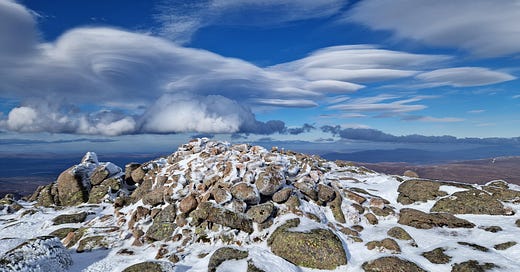



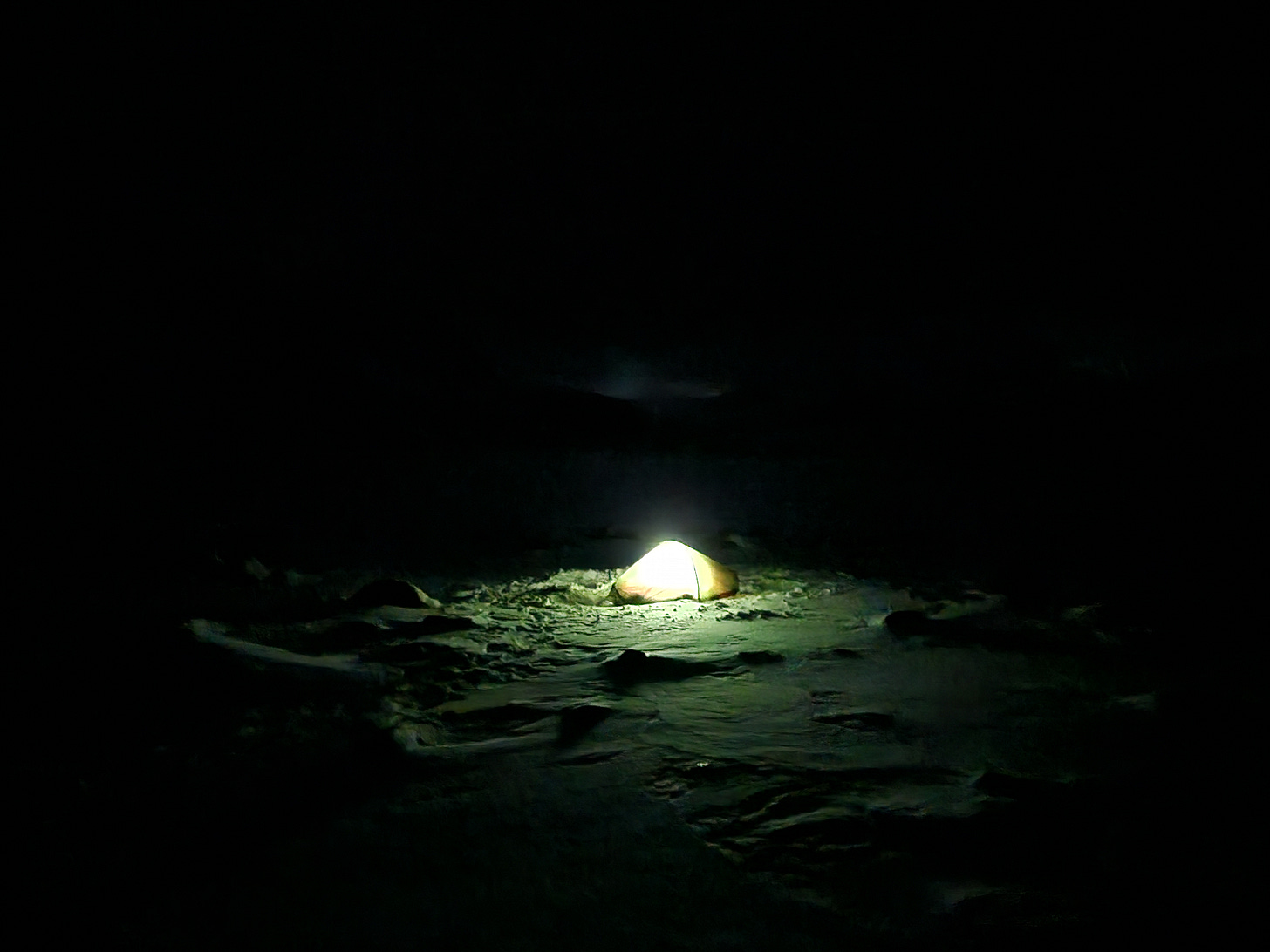
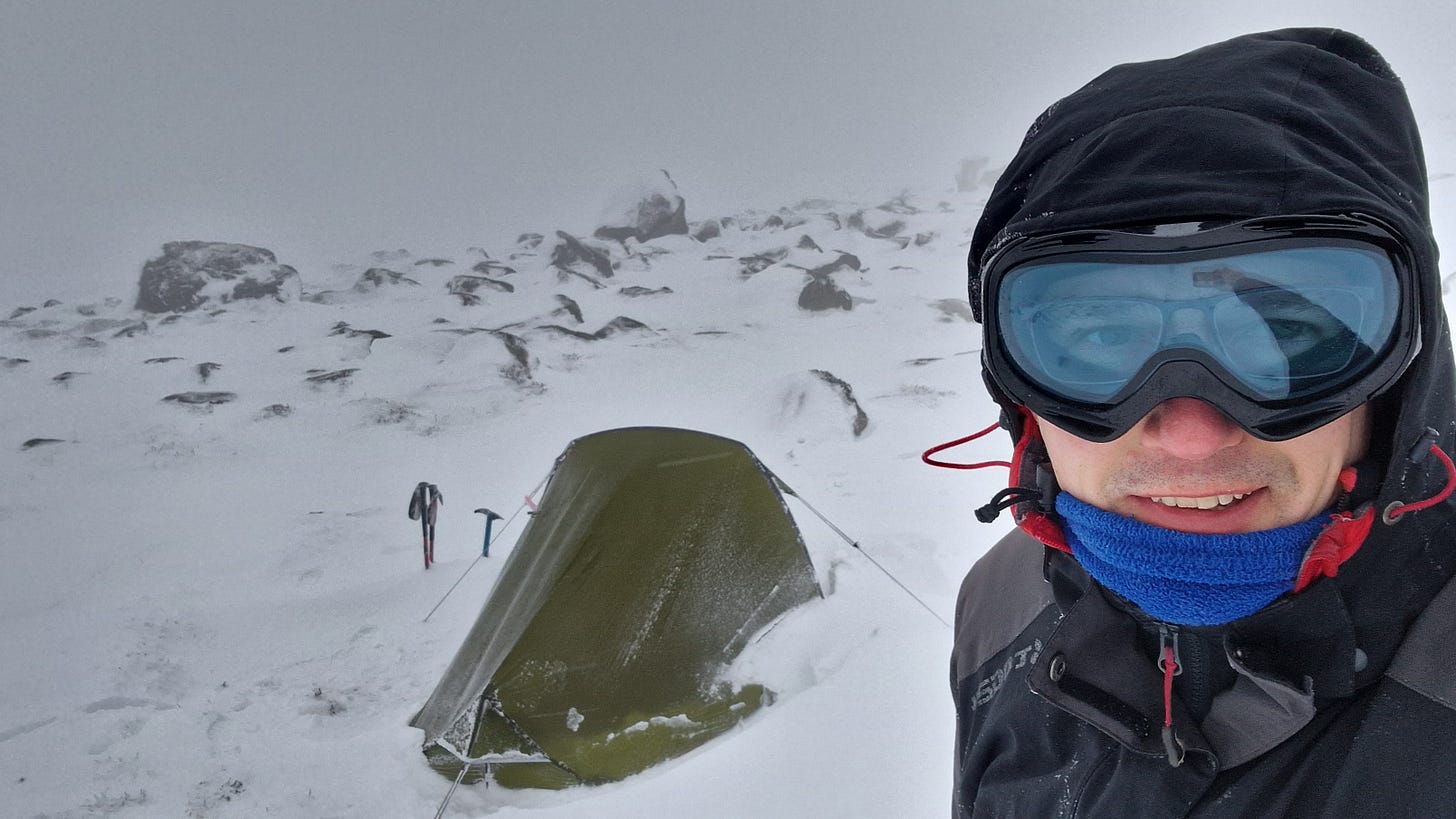
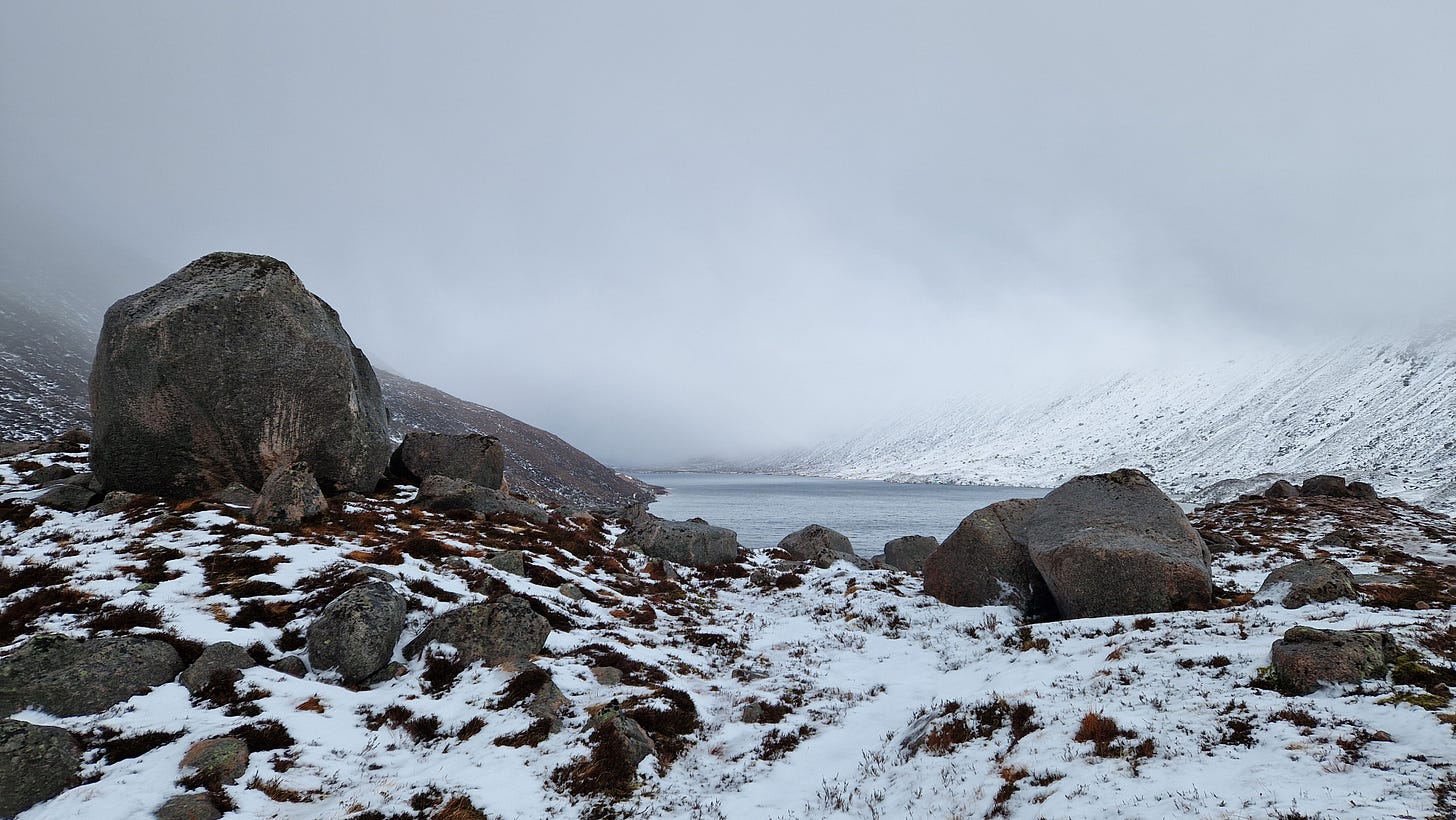
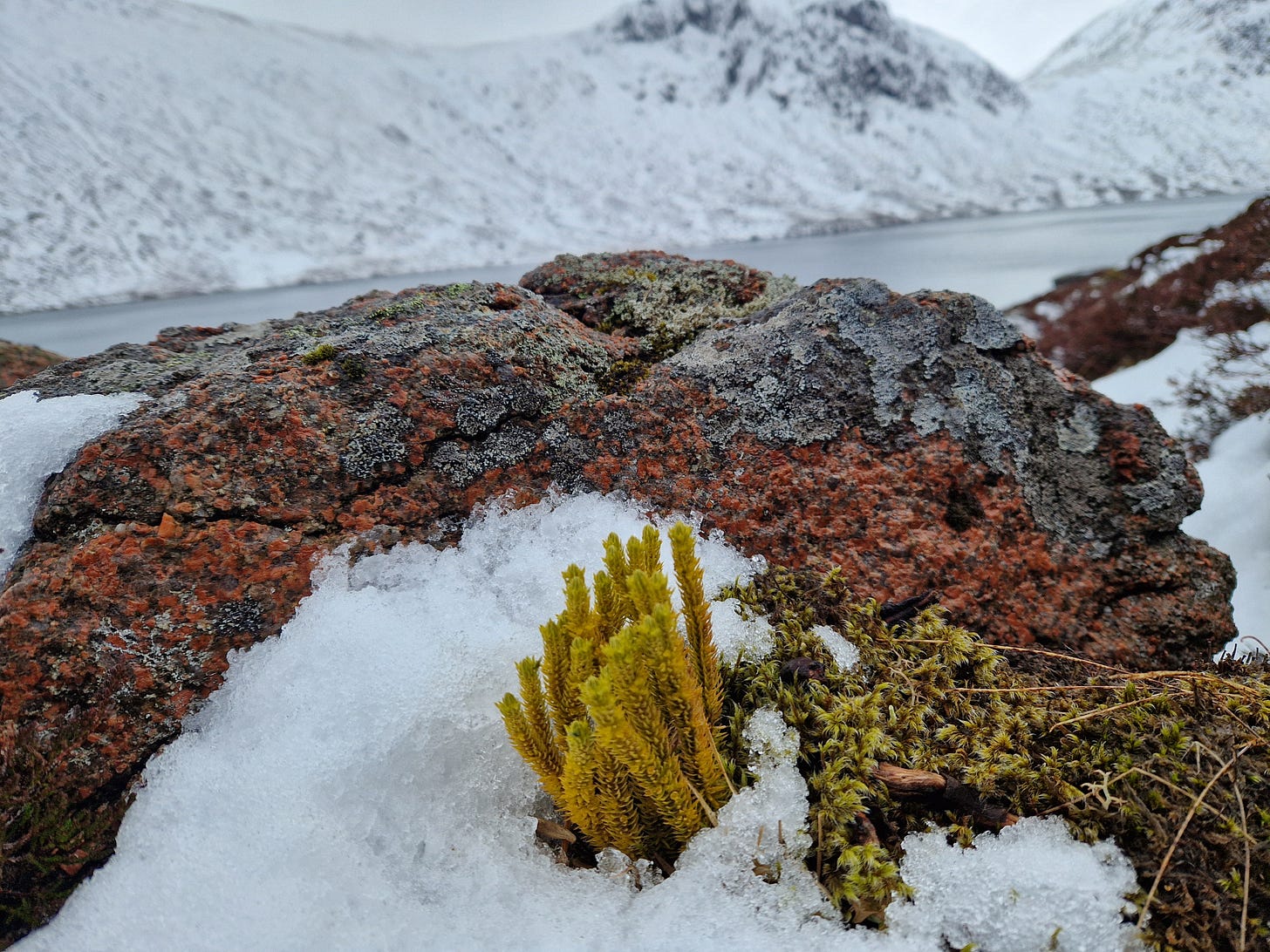
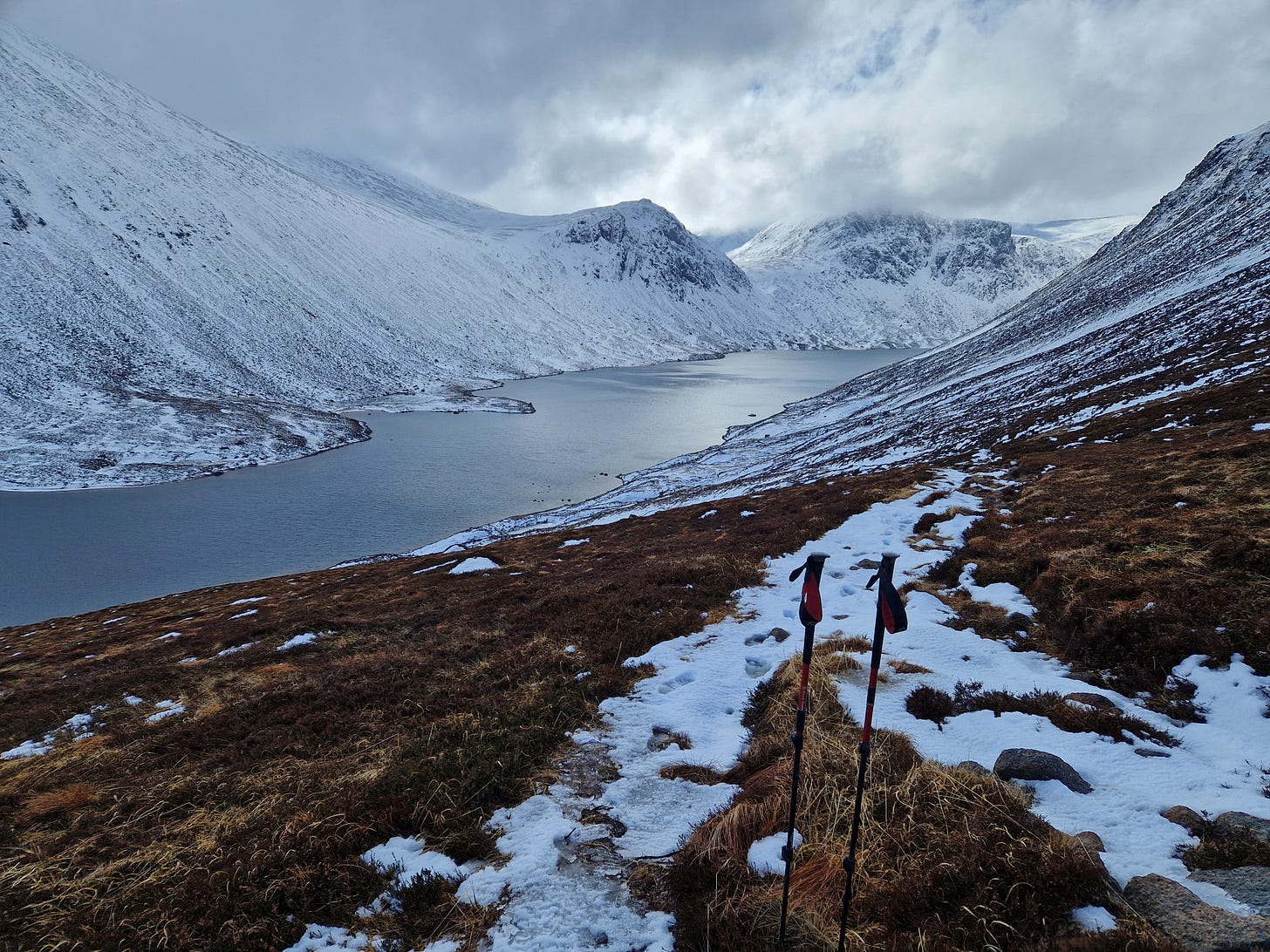
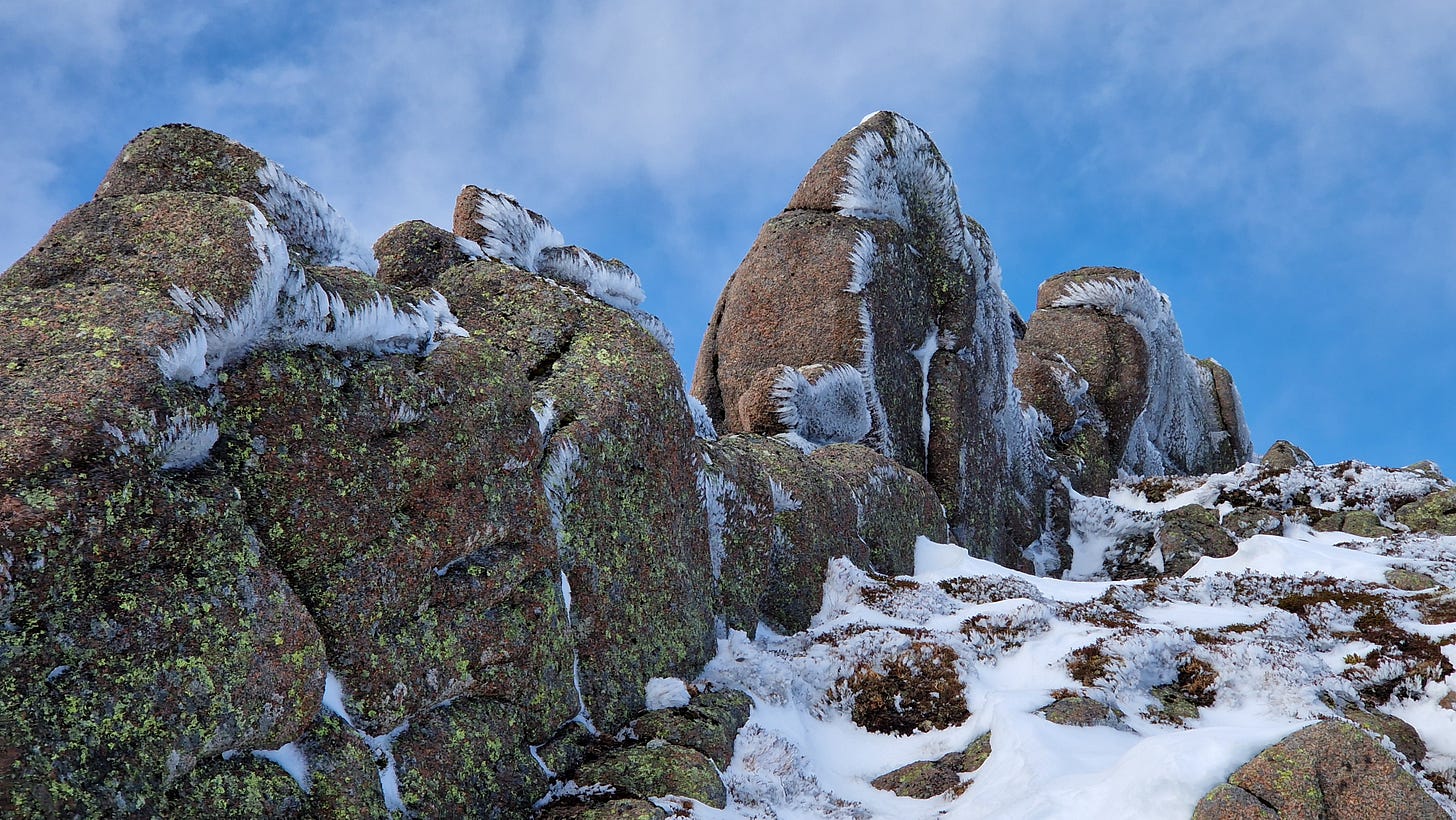


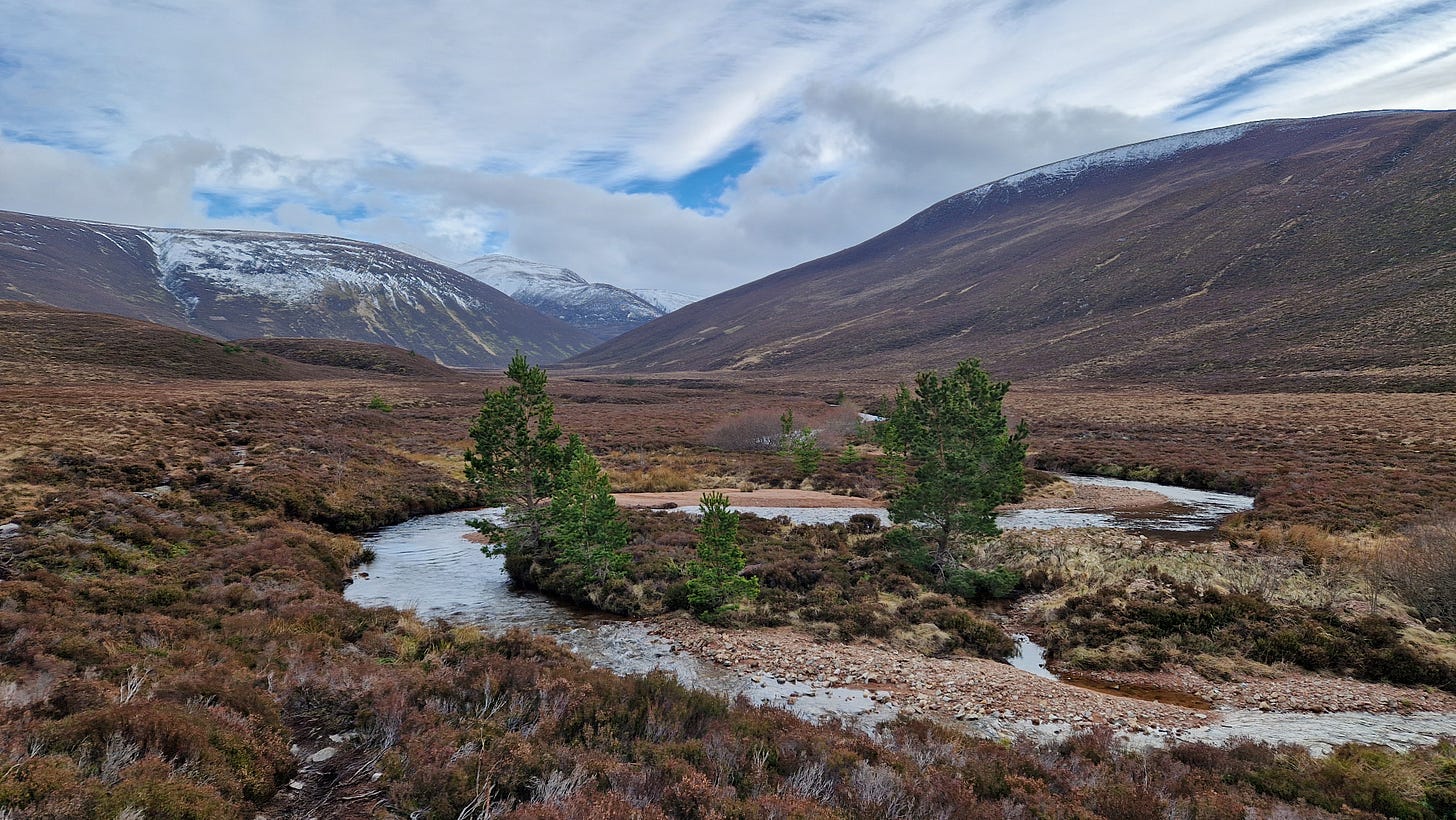
Thanks for finishing this one. I did wonder how it had gone. Love the pics and my top tip for winter UK camping is use a lightweight, breathable bivy bag. I’ve got the Alpkit one and it stops drips, condensation and inevitable snow clumps from soaking my sleeping bag.
Why not wear waterproofs in bed? So long as they're fairly dry, a useful extra layer!